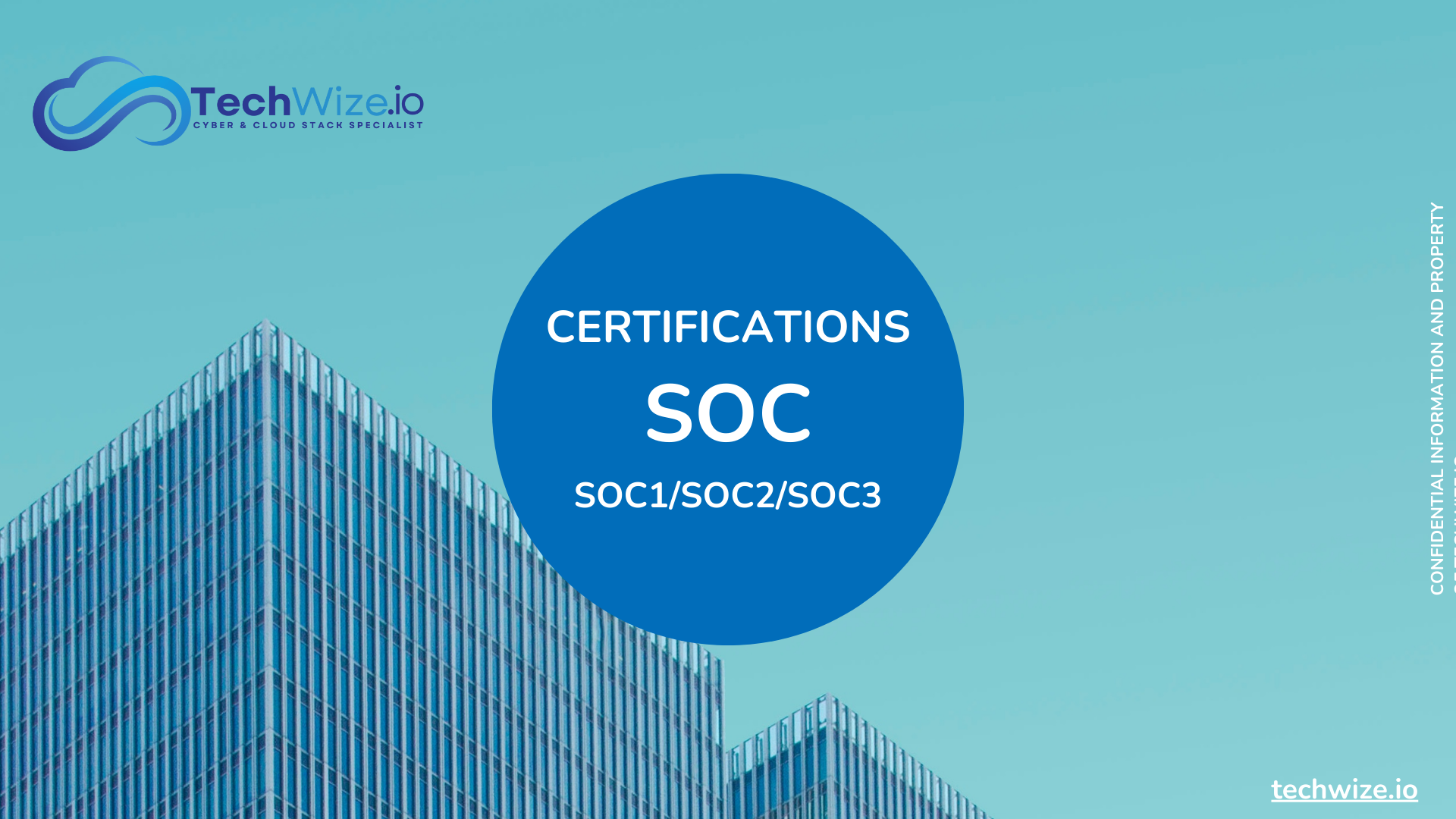The Era of Digital Compliance
The SAS70 standard has been a benchmark for the assessment of internal controls in organisations since its introduction in 1992. However, as data security and compliance needs have evolved, it has been replaced by System and Organization Controls (SOC) standards. This major transition occurred in 2011, ushering in the contemporary era with new challenges. Today, we take a closer look at SOC2 and its implications.
Understanding the SOC Standards
Firstly, the SOC standards, developed by the American Institute of Certified Public Accountants (AICPA), are essential for assessing customer data management. They are divided into three reports: SOC1, SOC2 and SOC3, each targeting specific aspects of internal controls. SOC2, in particular, is relevant to technology companies, as it focuses on trust services criteria relating to security, availability, processing integrity, confidentiality and privacy.
The Five Trust Services Principles of SOC2
SOC2 is based on five fundamental principles:
1- Security : You must implement robust controls to protect your resources from unauthorised access, using tools such as encryption, WAF, and intrusion detection systems. These measures ensure that only authorised people can access sensitive data, thereby reducing the risk of security breaches.
2- Availability : You must ensure the continuous availability of systems and services in accordance with contractual commitments. This involves using disaster recovery plans, redundancies and regular maintenance procedures to minimise service interruptions and ensure that customers can always access their data and services.
3- Integrity of processing : You need to guarantee that data is processed in a complete, valid, accurate and authorised manner. This includes data validation checks and verification processes to ensure that all transactions and operations are carried out correctly, without errors or unauthorised alterations.
4- Confidentiality : You have an obligation to protect information designated as confidential, through strict data management policies, confidentiality agreements and access controls. Companies must ensure that sensitive data is only accessible to authorised people and systems, protecting customer information from unauthorised disclosure.
5- Privacy : You must manage personal information in compliance with privacy laws and regulations, such as the RGPD. This includes obtaining consent from users for the collection and processing of their data, as well as putting in place mechanisms to allow individuals to control the use of their personal information.
What does this mean in France?

In France, the SOC2 certification process generally follows the same stages as in other countries.
SOC2 certification has become an increasingly common practice for companies. Auditors and approved firms are available to carry out these audits, in accordance with the standards established by the American Institute of Certified Public Accountants (AICPA). Although SOC2 certification is not required by law, many French companies choose to go through this process for a variety of reasons. Firstly, it meets the growing demands of customers and business partners, who often require tangible proof of compliance and data security. Secondly, SOC2 certification boosts stakeholder confidence by demonstrating that the company has effective security controls in place. All in all, passing SOC2 certification helps businesses to manage the risks associated with data breaches and to strengthen their security posture in an ever-changing digital landscape.
The SOC2 Audit Process (prior to the certification process).
The SOC2 audit is carried out by a CPA or an accountancy firm. There are two types of report:
Type 1 SOC2 report: This is an assessment of the design of controls at a given point in time.
Type 2 SOC2 report: This is an assessment of the operating effectiveness of controls over a period of time.
Type 1 SOC2 report:
This examines whether the controls described by the organisation are adequately designed to meet security and confidentiality objectives. This report includes a detailed description of the organisation’s system, including its processes, policies and controls. It assesses the design of these controls as at a specific date. The organisation must provide full documentation of its systems and controls, and demonstrate that they are well designed to meet the security and confidentiality objectives.
Type 2 SOC2 report:
The SOC2 Type 2 report goes beyond the design assessment and also examines the operational effectiveness of the controls over a specified period of time, typically at least six months. This report includes a description of the organisation’s system, the assessment of the design of the controls, and an assessment of the operating effectiveness of the controls over the period covered. It shows whether the controls have been implemented and are operating effectively. In addition to fully documenting the systems and controls, the organisation must demonstrate that the controls are not only well designed, but that they have been operational and effective over the specified period. This involves continuous monitoring and evidence of the operation of controls.
SOC2 certification process:
There are usually 4 main stages to SOC2 certification.
Preparation:
- You need to prepare documentation detailing its systems, policies, and internal controls.
- Make sure that these controls meet the criteria for trusted services (security, availability, integrity of processing, confidentiality and privacy).
- An internal assessment is often carried out to identify and correct any shortcomings before the official audit.
Selecting an auditor :
- A qualified CPA or accountancy body is selected to carry out the audit.
Type 1 audit:
- The auditor assesses the design of controls at a specific date.
- The auditor verifies that the controls are adequately designed to meet security and confidentiality objectives.
Type 2 audit:
- The auditor assesses the operating effectiveness of the controls over a defined period, usually at least six months.
- This process includes tests of controls to verify their continued operation and effectiveness.
- The auditor may perform periodic reviews and sampling to ensure that the controls are operating as intended.
Final report:
After completing the audit, the CPA writes a final report detailing the findings on the design and operating effectiveness of the controls. This report includes a description of the system, the tests carried out and the results of the assessment. The report is then presented to the organisation and can be shared with customers and other stakeholders to demonstrate the compliance and security of data management practices.
The importance of SOC2 for businesses and their customers
SOC2 is vital for building customer confidence, meeting contractual requirements, demonstrating compliance and preventing data breaches. It is a guarantee of security and reliability for technology companies and their partners. However, given the highly detailed nature of the report, it is preferable not to disclose it to the general public.
SOC3: A Public and Simplified Version
The SOC3 report is a more concise and accessible version of the SOC1 and SOC2 reports, specially designed for public distribution. Unlike SOC2, which provides in-depth technical detail and is primarily aimed at a restricted audience (often business partners or regulators), SOC3 provides a summary of controls and their effectiveness without going into technical detail. This allows companies to easily share their security and compliance commitments with a wider audience, including potential customers and non-technical partners.
SOC3 is based on the same trust services criteria as SOC2 (security, availability, integrity of processing, confidentiality and privacy) and uses the same control assessments. However, the final SOC3 report omits sensitive and technical details, confining itself to a confirmation of the organisation’s general compliance with the trusted services principles. This approach makes it easier to communicate compliance without disclosing specific information that could compromise security.
SOC2 and Beyond: Navigating the Cybersecurity Landscape
SOC2 compliance is a commitment to data security and customer trust. For technology companies and cloud service providers, it is synonymous with integrity and success. Continuous assessment and improvement of internal controls are essential to maintain this compliance. This certification is obviously necessary, but not necessarily sufficient in the face of increasingly sophisticated and intelligent attacks (see: AI). It is imperative to recognise that digital security is a constantly evolving challenge.
The more your business grows, the more vulnerable it becomes. This vulnerability is amplified by the increasing complexity of its infrastructures, whether on site or in the cloud. It is advisable to engage with cybersecurity experts to ensure highly effective protection. To protect yourself, you can use agile solutions on niche themes such as APIs, CI/CD, Software Supply Chain, WAF, IAM,CDN and Kubernetes.
Failure to strengthen your security can have severe consequences and damage your company’s reputation. By implementing fortified cyber security, you can not only comply with regulations, but also consolidate resilience in the face of constantly evolving threats. Only an ongoing commitment to improving security can guarantee adequate protection over time.

